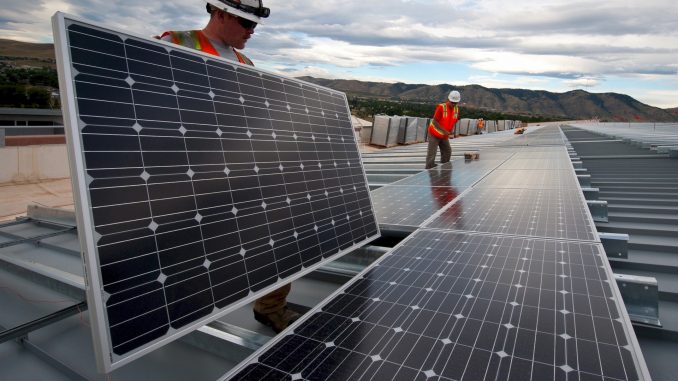
Due to the continuous dominance of renewable energy in the recent years, which is already proven to outpace fossil fuels and any other type of electricity, the US is shown to provide its support by adding more solar power beginning in the first quarter of 2018.
As indicated by a report from the Solar Energy Industries Association (SEIA), the US solar market supplemented 2.5 gigawatts of new capacity in the first quarter of 2018, adding 13% from the first quarter of 2017. This represents 55% of all US power added in the first three months of 2018, including fossil fuels and different types of renewable energy and sustainable power source.
SEIA CEO Abigail Ross Hopper expressed in a statement that this information demonstrates that solar power has turned into a “common-sense option” for a great part of the US and is too strong to ever be set back for long.
Additionally, the SEIA report states that the main part of the new solar capacity originates from utility-scale projects, which are extensive installations that provide power into the system. For companies like Nestle and AT&T, they switch their electricity source to solar power as non-residential solar. This was the second largest region of development, as indicated by the SEIA.
This development comes regardless of the 30% tariffs that the Trump administration collected on imported solar panels earlier this year. The tariffs became effective toward the beginning of February, which is a great change that some in the solar industry would prompt a reduced demand for solar power, as told to Business Insider.
According to Reuters, developers killed at least $2.5 billion of solar installation projects after the tariffs became effective. Some US senators had acquainted a bipartisan bill to nullify the tariffs, saying they “endanger tens of thousands of workers” who are employed to install and maintain solar installations in the US.
In 2017, before the implementation of tariffs, the production of one megawatt-hour of electricity costs around $50, as per an investigation from the investment bank Lazard. This is compared to the production of coal which costs about $102 per megawatt-hour, according to their calculations.
The increasing US solar investment reflects a bigger global shift. In 2017, solar energy pulled in $160.8 billion in investment, as indicated by the United Nations Environment Program, surpassing nuclear and fossil fuels. China, on the other hand, was considered to be the biggest investor in 2017, sinking $126 billion alone into the sector of renewable energy.
Additionally, solar was also the fastest developing power source worldwide, with 98 gigawatts included 2017.

